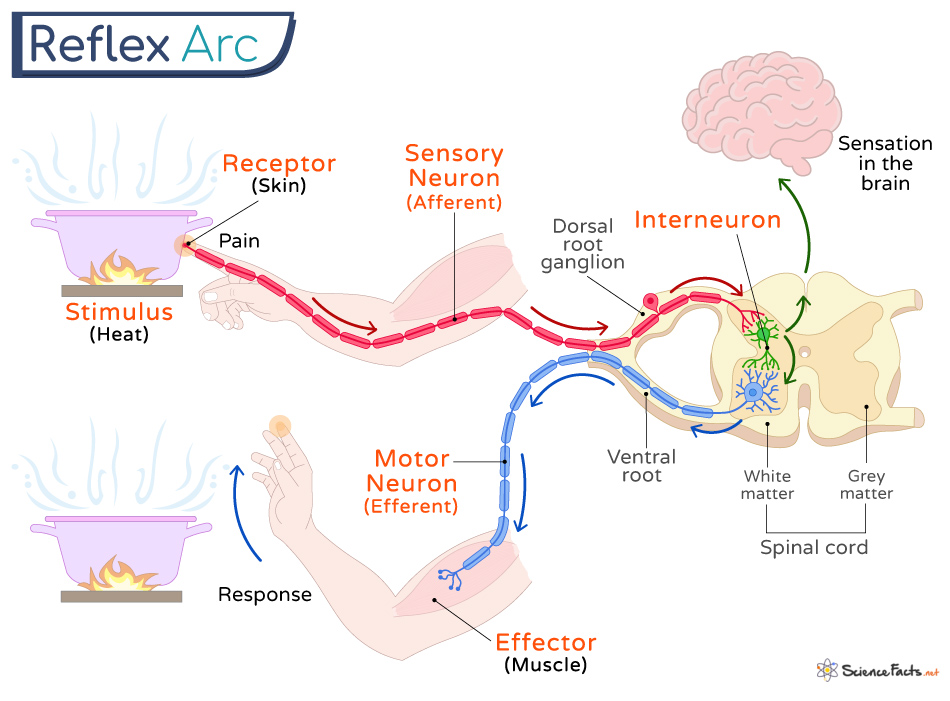A reflex arc is a pathway that a nerve impulse follows during a reflex action. Reflex arcs are highly beneficial in situations that require a quick response and do not involve conscious thought. A typical example of a reflex action is the patellar reflex (‘knee jerk’ response), which occurs when the patellar tendon is tapped. It is commonly employed to determine the presence of spinal lesions.
Components and Steps of a Reflex Arc
Types of Reflex Arc
1. Stimulus
It is any change in the environment (internal or external) detected by a receptor. It initiates a response known as the reflex. It can be anything like a heat or cold sensation, an electron shock, and touching a sharp object.
2. Receptor
It detects the stimulus and transmits the nerve impulses to the brain for decision-making. They can be of different shapes based on their origin, such as pain receptors (having free nerve endings), thermoreceptors (containing specialized heat and cold receptors), and mechanoreceptors (having specialized muscle endings like muscle spindle).
3. Sensory Neuron
Also known as afferent neurons, they bring the impulse from the receptor to the central nervous system (CNS) – the brain and spinal cord. It thus functions as a messenger. In higher animals, most sensory neurons enter the spinal cord using the dorsal root and synapse with a relay neuron in the grey matter instead of passing the information directly to the brain. This character allows reflex actions to occur relatively quickly. However, the brain will eventually receive sensory input in a reflex action. We can sense when we toucha hot object. It happens because our brain or spinal cord knows that sensation. This action is performed by sensory neurons carrying sensory impulses.
4. Motor Neuron
These neurons carry the impulse from the central nervous system to the effector organ for a response. They are also called efferent neurons. On touching a hot object, the impulse travels from the brain or spinal cord to the skeletal muscles, stimulating them to contract and instantly remove the body from the hot thing.
5. Interneuron
The interneuron or the relay neuron synapses with a motor neuron, which leaves the spinal cord via the ventral root. The integration center communicates between the central nervous system and the sensory and motor neurons. Most reflexes are controlled by the spinal cord instead of the brain. It is because the path from most body parts to the spinal cord is short compared to the brain. Thus, the response from the spinal cord can reach faster to those muscles or glands that are in touch with the hot object.
6. Effector
The muscle or the gland that produces the response is called an effector. The skeletal muscle is one such effector. Automatic (visceral) reflex arc affects the inner organs of our body, such as smooth muscles. In contrast, a somatic reflex arc affects the skeletal muscles. Based on the number of synapses involved, the reflex arc can be monosynaptic (with a single synapse) and polysynaptic (with two or more synapses). A monosynaptic reflex arc contains only two neurons, one sensory neuron, and one motor neuron. In contrast, polysynaptic arc in polysynaptic reflex arcs, one or more interneurons connect sensory and motor signals.
